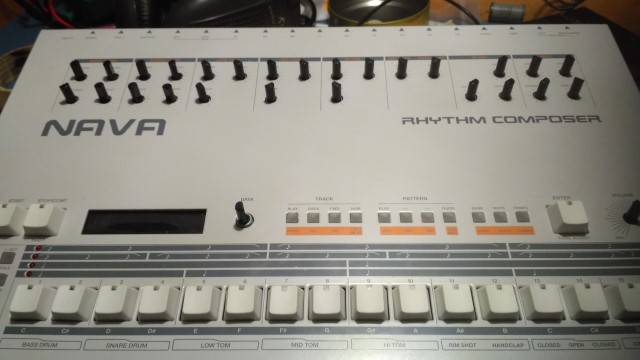
Done, it is finally alive !!!
Ufff, it took me a lot of time, but surely it was worth it! Finally, I have in my hands a Roland TR909 as in the old days. The sound is identical because this is a real clone, the appearance not precisely the same, but similar enough to fade the memories and fully create the illusion.
I bought the kit two or more years ago, but because of some laziness to start a project of this size and the delay to reorganize and restore the studio, which could no longer be postponed, I only had complete it now.
The NAVA is a clone of the classic Roland TR-909 drum machine, offered by the e-licktronic site in the DIY kit form:
http://www.e-licktronic.com/en/nava-parts-kit/50-nava-tr909-clone.html
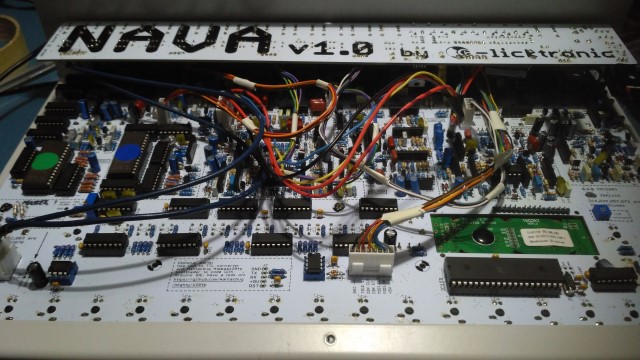
The kit consists of the motherboard and an I / O card, plus a series of transistors and ICs, which are obsolete and therefore difficult to acquire. It is necessary to buy a large list of components, but there is a BOM with a link to Mousers where a prepared trolley is already present. The project is quite complex, given the number of components and their density. The construction is even more complex as the connection points and the relative exposed copper are really tiny, forcing during the building, to never lower the attention.
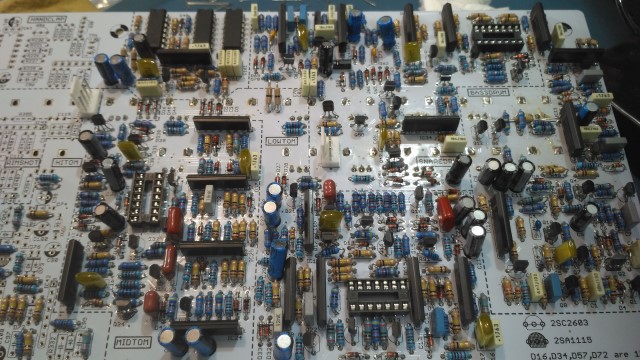
In fact, despite the many years of experience in DIY and the needed careful attention, the construction was not entirely easy.
At the end of the project, after days (or in my case weeks) of work, the crucial moment is always to push the ON switch and verify the presence of “life” in a new assembly. Unfortunately, this time after loading the software and verifying that the sequencer was working, I noticed that the HH was not present … OMG impossible to stay too long without that emblematic OH!
While I have no problems with the construction, not having studied electronics, diagnosing a failure is for me always a nightmare. This time, I was able to put into practice some techniques I learned on how to use the oscilloscope to trace failures. The culprit turned out to be a five pins transistor, the old 2SA798 quite difficult to find, at reasonable prices. I’ve been able to emulate it, using a couple of matched BC560 transistors, soldered together.
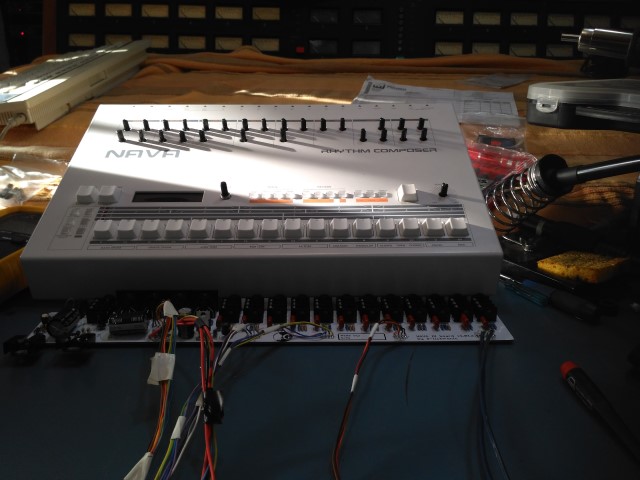
ATTACK OF THE CLONES
With the imminent arrival of the Behringer’s 909 and the Roland virtual analog reissue, we will soon be invaded by clones of this vintage drum machine, which will perhaps cause some of the magic of it, to be lost. BTW assembling with your own hands a piece of electronics with which playing music and having fun, is one of the greatest satisfactions a synth-nerd can experience. In my case, I have in my hands an electronic drum machine that I had loved a lot but then sold to switch to the, in those times new, PCM technology (a Korg DDD-1) and in the following years could no longer buy it because of the crazy prices of these units in the second-hand market.
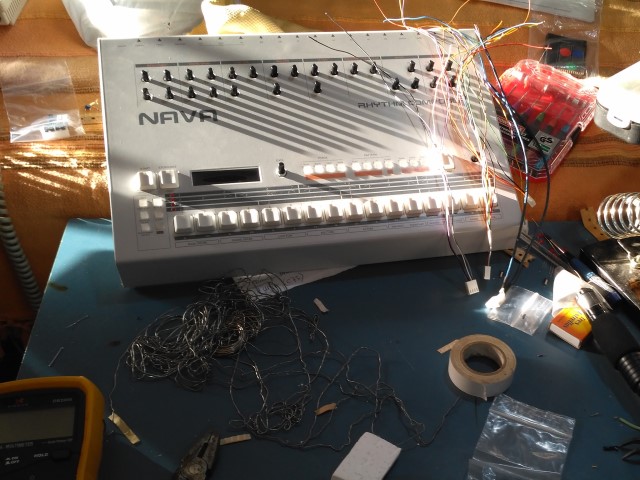
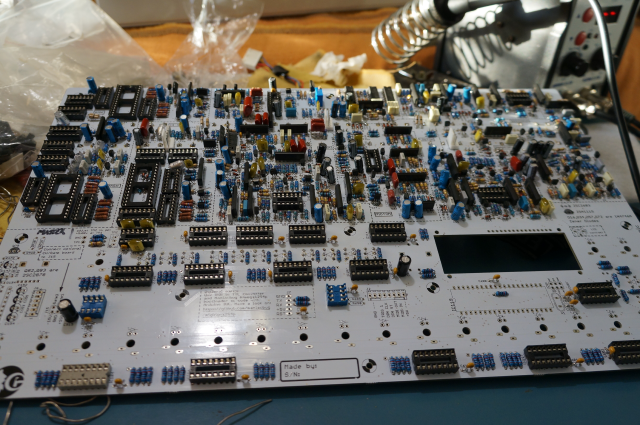
Below you will find some of my tracks recently released, using the NAVA Roland TR-909, thanks for listening:

classic 909. I use allot of old 909 samples in my music though I never owned one. I do have an MC 303 around that I still whip out occasionally but over time the noise has compromised the sound…can you think of any simple solution to that problem. I assume it is dust contamination but fear to open her up because she is an old girl and has never been touched on the inside. I don’t want to break her, but if I could clean up the noise I could get more use outta her!
The MC303 while being a retro-inspired machine, has already a modern architecture. It can be harder to repair if you are uncomfortable working with SMD components. In case of noise and after being sure it is not the jack for the audio output, I would maybe start checking the condensers on the audio section, especially those used as “filter” with one leg connected to ground.
The classic 909 sounds in your recent tracks is awesome. I had no idea the old 909s had become so pricey and rare. Enjoyed the article!
Thanks man, I’m glad you enjoyed the reading :)
Amazing job, Max! Done with remarkable passion! Can imagine the BIG moment of switching on for the first time :) Wishing you big fun with this beautiful electronic music tool! I am sure you will harvest the invested energy back, cause the Universe loves music done with true love ;)
Thank you very much for the nice words! Yes always thrilling the ON switch test :D
Great project, I take it those stalks need some knobs fitting on them? Looks great though, and just in time for the Behringer clone heh heh !
Used to run a studio in partnership with someone else back in the early 90s and we had a 909 and a 727 in there; to be honest I never really liked that mushy snare too much and I’m also fairly sick of the other sounds now after nearly 30 years (even though I still use them myself on a regular basis lol).
I’m currently getting the best analogue kicks I’ve ever achieved from my Behringer Neutron funnily enough, awesome punchy filter drops and snappy envelopes on that fella.
I always thought the 909 was a great looking piece of kit though, and yours definitely has the iconic look; seems to be halfway between a 909 and a 707 judging by the pics, and that’s a good place to be:)
Thanks for your comment! Yes, the knobs are already there now, I must take a new picture and place it as the main one. I bought a 909 a soon as it was introduced, but then attracted by the new PCM technology, I sold it for buying a Korg DDD-1. I repented for this action for the whole life! :D Neutron looks like a nice synth, I watched several videos and it sounds great, sure you’re having lots of fun! :)
allways had a passion for roland gear.only use a 42 year old sh 101 these days,but those early machines 606,909.are complete dream machines.been messing at my mates studio,where i work,with some of his clone machines,there amazing….love your passion for studio kit max.your a true king of the self build,
Thanks so much, Rick! :) The 101 is such a cool synth, congrats! I look often at the recent Behringer’s clone, maybe one day..